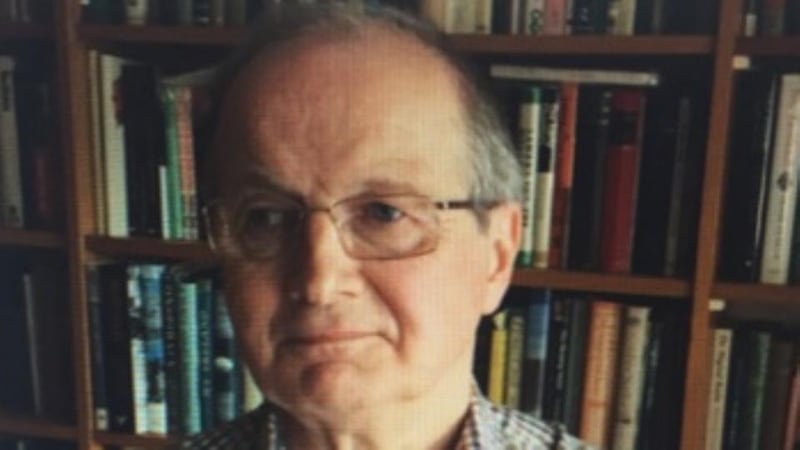When the paratroopers’ gunfire echoed across the open ground of Rossville Street, there was nowhere to hide: from panic, chaos and the fear of being hit.
Out in the open, we wondered at first whether they were rubber bullets. Truth dawned with the whine of high velocity live rounds and their acrid wafting smell.
Instantly we fell on our stomachs, cowering.
We were among the fortunate ones on that day of infamy.
Fright and self-preservation drove us even lower, closer, harder into each other's bodies
Unknown to us as we crouched with our backs to the firing, blood was flowing in a merciless killing zone just 250 yards further down Rossville Street.
There in the shadow of the high Rossville Flats, defenceless people were being cut down by trigger-happy soldiers.
High above the city earlier, I saw Willie McKinney for the last time as the march assembled beside a big playing field in Creggan. He was on a low wall, cine camera in hand as usual.

Eldest of a family of 10 children, he was one of a coterie of photography enthusiasts who always brought their cameras to civil rights demos.
Willie (27) was a decent, guileless young man, engaged to be married and set for a secure future. He was a compositor on the Derry Journal where I knew him as a helpful and likeable colleague when I was a reporter there.
He wore heavy rimmed glasses, had a good head of hair and a hearty throaty laugh for the one-liners and jokes that abounded in the Journal print room.
Willie wasn’t a political activist, he just liked making home-movie clips of family events such as Holy Communions, his fiancee walking on a Donegal beach and big public events like civil rights marches.
On Bloody Sunday he was shot in the back and killed by a paratrooper in Glenfada Park.
The previous Sunday, I covered the anti-internment march at Magilligan Strand where troops wielding batons and firing rubber beat back protestors.
I had joined The Irish Times in Belfast three months earlier. Now home in Derry for the weekend, I wanted to see how the January 30th march would go off.
It would also be a chance to meet Dick Grogan, one of The Irish Times' most experienced reporters, who had been assigned to cover it.
I could lend a hand too if necessary, never envisaging what was in store.
As events turned out, Dick and our brilliant colleague, Nell McCafferty, were on the front line and provided searing eye witness reportage of horrific bloodshed and mayhem, and the heroism of bystanders, medics and priests.
Twenty minutes or so before the troops’ onslaught, I was one of many people milling around Rossville Street. We had seen standard Derry rioting before and were relaxed about whatever was happening on William Street.
As a friend and I chatted to civil rights leader Ivan Cooper, a boy of about 13 approached and said someone had been shot earlier by a soldier further up William Street.
But his words didn’t faze us since we hadn’t heard gunfire and everyone around us was calm, apparently not having heard shooting either. The rumour mill was at work, I decided. How wrong I was.
Two people had indeed been wounded – Damien Donaghy (15) and John Johnston (57), who died several months later.
When the full fusillade started, I was among a small crowd at the speakers' rally point at Free Derry Corner. I wanted to hear Lord Fenner Brockway, the veteran British anti-colonialist.
Then came loud, crisp, cracks.
Mystified, I turned to see what was happening and in the same moment dived for cover with the rest of the crowd.
But in the open there was no cover.
We threw ourselves low into a huddle, wildly holding on to arms, shoulders or coat tails of whomsoever was in front or beside.
Fright and self-preservation drove us even lower, closer, harder into each other’s bodies before inching crablike across the ground in front of the speakers’ lorry.
Incredulity fuelled fear. Why would soldiers open fire? Were shots coming from above us on Derry Walls?
As the noise sharpened and the smell of live rounds carried, I clung to a fast fading conviction that they must be warning shots in the air.
I think I gradually sensed there were no whizzing sounds over our heads or bullet strikes on the ground or brickwork.
Nevertheless, we stayed in our cluster, maybe for 30 seconds, maybe for two or three minutes or more, I have no idea.
We waited for any hint of a lull until each in turn took a chance and sprinted across the road to the safety of a covered alley.
As the casualties’ names emerged later, everyone seemed to know at least one or someone connected to them.
That night there were sore hearts in many homes in Derry.
Martin Cowley is a former Derry Journal reporter, Irish Times London Editor and Reuters Ireland Correspondent



















